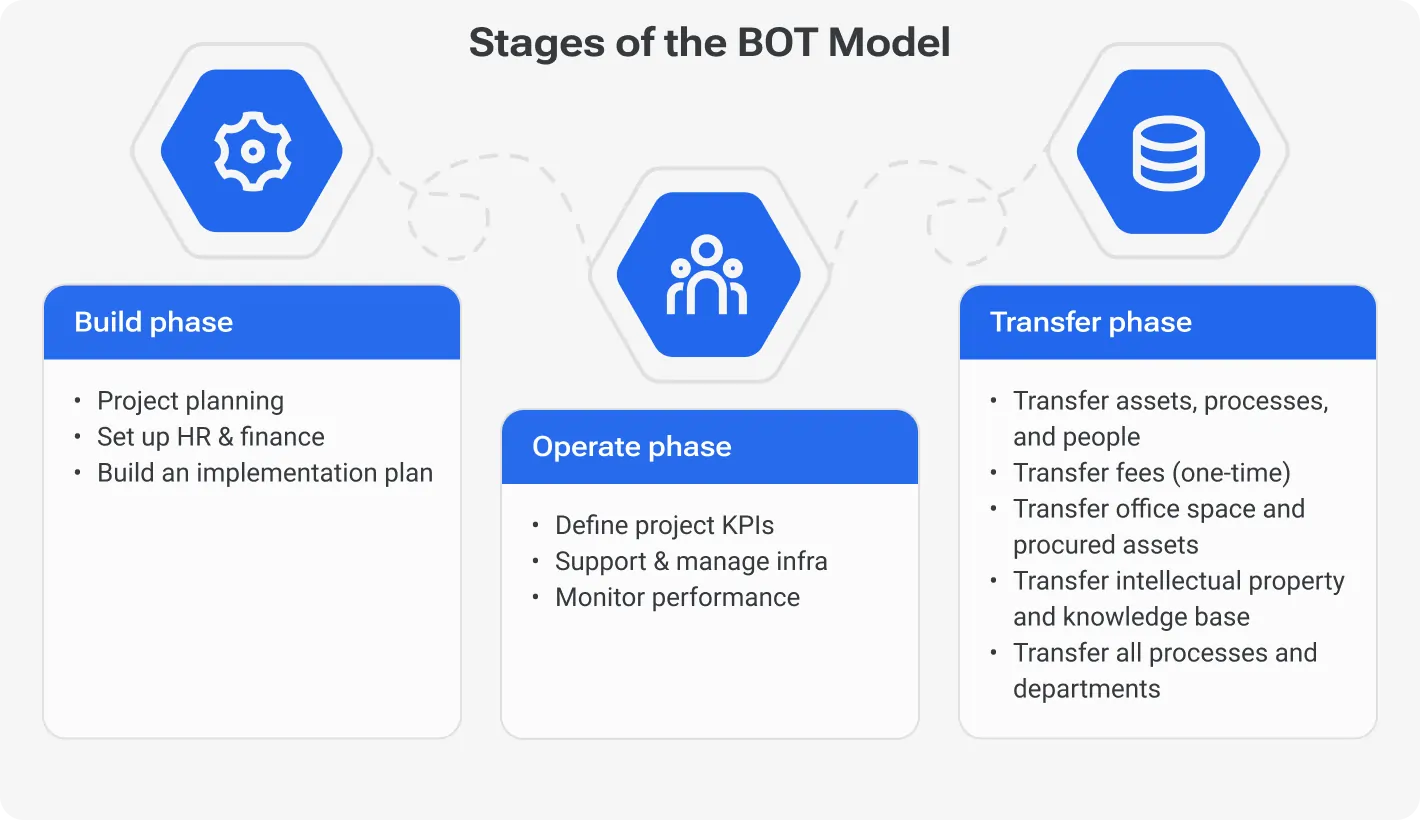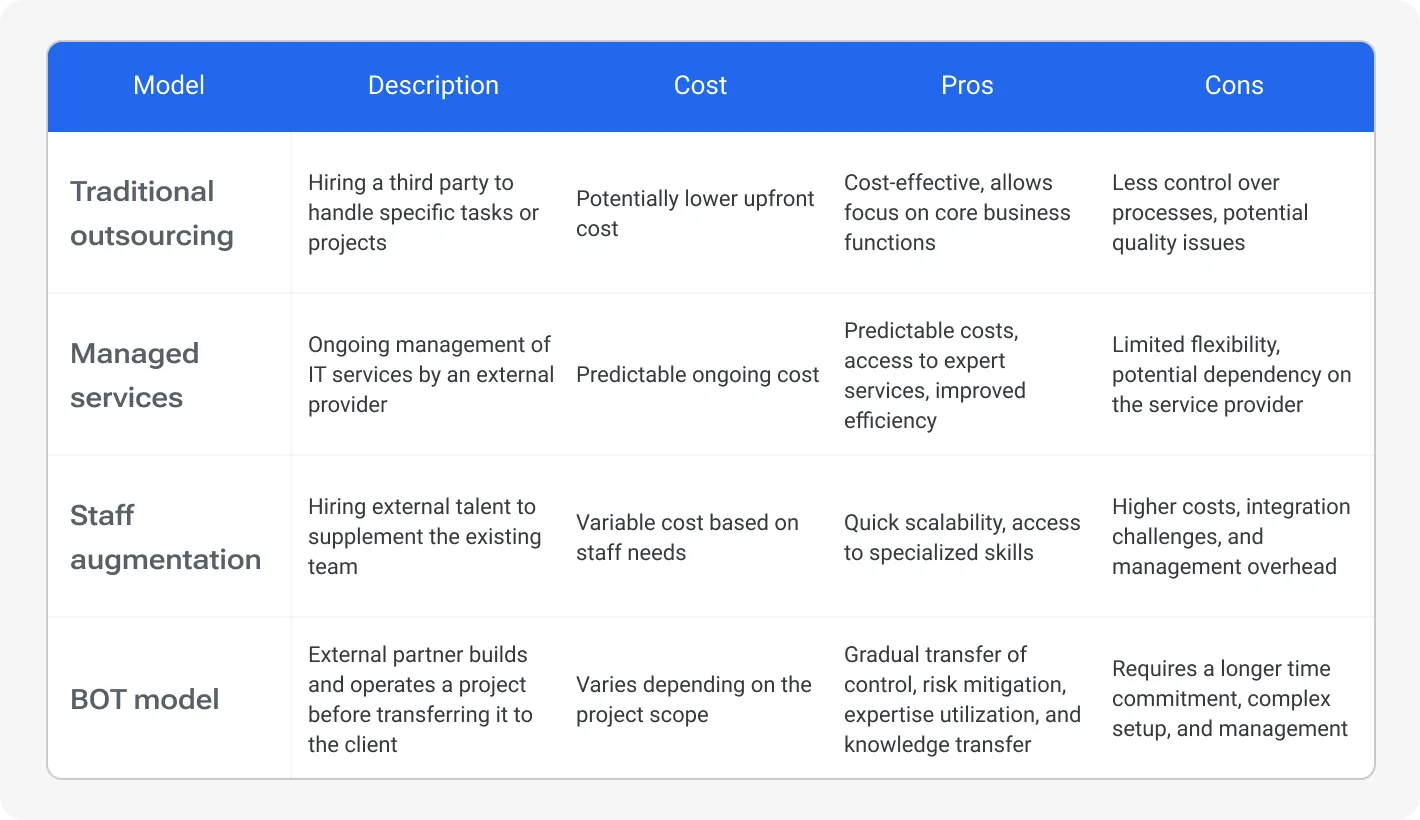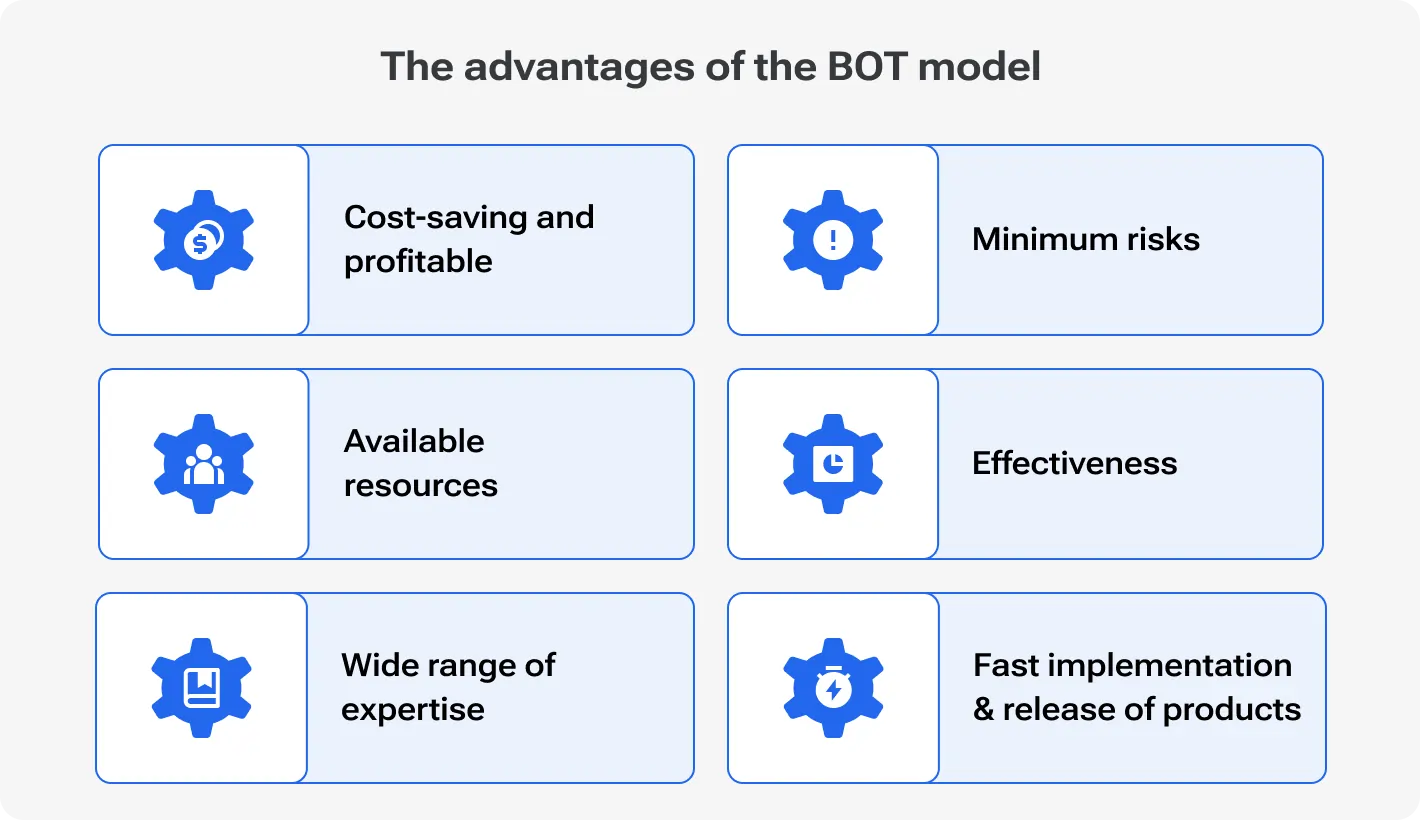Outsourcing to Czechia

How much does it cost to hire developers in Czechia?
Dec 2nd 25 - by Devico Team
Find out how much it costs to hire software developers in Czechia in 2025. Compare hourly rates, roles, and factors that impact pricing.
Hire
Hire by role
Hire Front-end developers
Hire Back-end developers
Hire Full-stack developers
Hire Android developers
Hire iOS developers
Hire Mobile developers
Hire AI engineers
Hire ML engineers
Hire Automation QA engineers
Hire Blockchain developers
Hire Data engineers
Hire Cloud engineers
Hire by skill
Hire JavaScript developers
Hire TypeScript developers
Hire Ruby on Rails developers
Hire React Native developers
Hire Flutter developers
Hire Golang developers
Hire React.js developers
Hire Python developers
Hire PHP developers
Hire .NET developers
Hire Java developers
Hire Laravel developers

BOT
July 29, 2024 - by Devico Team
Summarize with:
The digital age is relentless. As of half of 2024, we already have over 10 breakthrough technologies – from super-efficient solar cells to AI-for-everything – that will form our next 20 years.
But the main trick is that customer demands and expectations have soared drastically due to this tech evolution, placing an ever-increasing strain on IT resources. Building and maintaining a skilled in-house IT team can feel like walking a tightrope — expensive, time-consuming, and fraught with the risk of falling behind.
IT outsourcing is a key strategy for businesses looking to tap into external expertise, cut costs, and speed up project timelines. Traditional models, like simple service agreements or complex partnerships, offer different levels of control and collaboration. But modern business needs more flexible and comprehensive solutions.
Within this article, our goal is to take a close look at the Build-Operate-Transfer (BOT) model, a fresh approach to IT talent acquisition and outsourcing challenges that's changing how companies handle their tech projects. We'll break down the mechanics, benefits, and challenges of the BOT model to show its strategic value and practical use.
It lets businesses use external expertise while gradually taking full operational control. This approach reduces risks and ensures a smooth transfer of knowledge and skills. Let’s run through the new understanding of IT outsourcing.

The Build-Operate-Transfer model has its roots in large infrastructure projects, where it was used to develop and manage public works like highways, power plants, and airports. Over time, this model found its way into the IT industry as companies sought more effective ways to manage complex projects.
We can’t avoid mentioning risk mitigation in IT outsourcing. Irrespective of thorough analysis and preventive measures, many business owners consider the offshore outsourcing model effective yet high-risk. The BOT model is a structured approach that combines the benefits of external expertise with the eventual goal of internal ownership.
You already know that the BOT model stands for Build-Operate-Transfer. It's a strategic approach in IT outsourcing, where an external partner sets up and runs a project or service for a certain period before handing over full control to the client. This model is especially useful for companies looking to develop new capabilities or enter new markets without initially bearing all the risks and costs.
This is an initial phase. During this, the executing company works closely with the customer’s team, focusing on setting up the necessary infrastructure, IT talent acquisition, and developing IT processes. This phase involves:
Infrastructure setup: Establishing the physical and technical environment needed for the project: acquiring hardware, software, and other resources.
Talent recruitment: Hiring skilled professionals who will work on the project. Typically, it’s about sourcing talent locally or globally, depending on the project's requirements.
Process development: Creating the workflows, procedures, and best practices that will guide the project's execution. This ensures that all activities are aligned with the client's objectives and standards.
In the operate phase, the external partner takes over the day-to-day management of the project. During this phase, the following IT outsourcing challenges may arise:
Operations management: Overseeing the project's daily operations to ensure everything runs smoothly. Like managing the team, handling logistics, and addressing any issues that arise.
Process optimization: After the fast start, many processes will encounter some difficulties. Anyway, the executing company should (and likely will) notice aspects that can be improved.
Performance metrics: Outsourcing partner sets and then meets specific performance targets to ensure the project delivers the expected results. This helps maintain accountability and transparency throughout the operation.
The transfer phase is the final stage. In this phase, ownership and operational control are gradually handed over to the client.
Knowledge transfer: Ensuring that all the necessary knowledge, skills, and documentation are passed on to the client's team. Here, the partner establishes training sessions, workshops, and comprehensive handover documents.
Operational handover: Gradually transferring the management of day-to-day operations to the client's team (typically done in stages).
Full control transfer: Finally, the client takes full control of the project, including all infrastructure, personnel, and processes. The external partner may continue to provide support and guidance as needed during the initial period.
The BOT model's phased approach ensures that businesses can leverage external expertise and resources while eventually gaining complete control over their IT projects.
Many companies considering an outsourcing solution get caught in a maze of acronyms. Traditional outsourcing, managed services, staff augmentation, etc. Each approach has particular benefits, yet the BOT model stands out as a strategic partnership fostering long-term IT excellence within your organization.

Myth: BOT is too complex for small and medium-sized businesses.
Reality: While the BOT model involves multiple phases, it is scalable and can be adapted to the needs of smaller enterprises. It allows these businesses to leverage high-level expertise and infrastructure without significant upfront investment.
Myth: BOT means losing control over the project.
Reality: The BOT model is designed to gradually transfer control to the client, ensuring they have a say in every phase. This phased approach actually increases the client’s control over the final outcome.
Myth: BOT is only suitable for large-scale, long-term projects.
Reality: Although ideal for extensive projects, the BOT model can also be applied to shorter-term initiatives. Its flexibility makes it a viable option for various project scopes and durations.

One of the primary benefits of the BOT model is the reduction in initial capital expenditure. At the same time, one of the most common worries among business owners is the initial costs of infra setup. For this reason, an external expert who handles the initial setup and operational phases is not the worst option (one of the best to be honest).
Expenses on infrastructure, technology, and talent search are spread out over the life of the project, which leads to more predictable long-term costs. This financial predictability allows these businesses to budget more effectively and allocate resources to other strategic initiatives.
Operational transition is another matter that worries business owners. However, operational and financial risks mitigation comes before. During the build and operate phases, the external partner bears the brunt of the operational challenges and financial uncertainties.
It's not bad when your partner has enough expertise to manage these “chores.” By the time the project is transferred, the processes are optimized, and any major risks have been addressed, resulting in a smoother transition and a more stable operation.
Time is a critical factor in any IT project. The BOT model speeds up setup and operational readiness compared to traditional outsourcing models. The external partner, with their knowledge and resources, establishes the necessary infrastructure and recruits the required talent.
This speed is crucial in the competitive business market, where delays can lead to lost opportunities and increased costs. The BOT model ensures that projects are up and running quickly, allowing companies to start reaping the benefits sooner.
A core advantage of the BOT model is the gradual transfer of operations from the external partner to the internal team. This phased approach ensures that the client eventually gains full control over the project, aligning it with their long-term business goals and strategies.
The transfer process starts with comprehensive knowledge sharing and training, equipping the internal team with the necessary skills and insights to manage the operations effectively. External partners leave when they are sure the project continues to evolve in line with the company’s vision and objectives.
Leverage the expertise of an external partner during the build and operate phases. This way, you can benefit from new technologies and proven practices that you likely do not have access to otherwise.
The external partner brings in fresh perspectives and advanced IT solutions, instilling a culture of innovation within your company. Especially if you can set up comprehensive communication coverage supporting this innovation-culture shift.
As the project transitions to the internal team, these technological advancements and practices are supposed to drive continuous improvement and competitive advantage.
One more IT outsourcing benefit worth mentioning is that the BOT model facilitates seamless integration with the client’s existing systems and processes.
During the build phase, the external partner works closely with the client to understand their current setup and ensure compatibility. This careful planning and collaboration result in a smoother integration, minimizing disruptions to ongoing operations.
To tell the truth, when it comes to leveraging the BOT model, it all comes down to choosing the right partner and sizing up all nuances of cooperation. If you miss some important agreements or aspects, this model could throw you a curveball. So, take time to size these factors up.
Almost any process in its initial phase is complex and demanding. Companies face significant challenges in recruiting the right talent and developing the necessary infrastructure. On attracting and hiring a skillful workforce. On average, the direct cost of attracting, hiring, and training new staff is about USD 4,700 per hire and takes around 42 days. Any company needs financial and temporal investments to ensure the project starts on the right foot.
A smooth transition can never be really smooth. Unless you follow these tips to facilitate seamless management.
Structured handover plan: Develop a detailed handover plan that outlines the key activities, timelines, and responsibilities. Possibly, you can tailor the RACI model for that [Responsible, Accountable, Consulted, Informed]. The plan should also include regular checkpoints and reviews to monitor progress and address any issues. Think beyond just technical skills — include crucial operational procedures and best practices in the plan as well.
Knowledge transfer sessions: Conduct comprehensive knowledge transfer sessions, including documentation, training, and hands-on workshops. These sessions should cover all aspects of the project, from technical details to operational procedures, ensuring that the internal team is well-prepared to take over.
Gradual transition approach: Implement a phased transition approach where the external partner gradually reduces their involvement while the internal team progressively takes on more responsibilities. This method allows for continuous support and mentoring, minimizing disruptions and ensuring a smooth handover.
Contracts, Service Level Agreements (SLAs), and regulatory compliance need careful attention. If your business is registered in the US, you may encounter these common compliance regulations: the General Data Protection Regulation (GDPR) for data protection, the Health Insurance Portability and Accountability Act (HIPAA) for healthcare information, and the Sarbanes-Oxley Act (SOX) for financial reporting. In the UK, this list is serious as well: GDPR, the Data Protection Act 2018, and the Financial Conduct Authority (FCA) standards for financial services.
Data security and privacy: The GDPR and the California Consumer Privacy Act (CCPA) are just a few examples of regulations governing data security and privacy. Contracts with your BOT partner must clearly outline data ownership, security protocols, and procedures for handling data breaches.
Intellectual Property (IP) rights: The BOT model often involves the development of intellectual property. Ensure your contracts clearly define ownership rights for any software, processes, or innovations created during the project lifecycle.
Service Level Agreements (SLAs): Clearly defined SLAs are essential for ensuring your BOT partner meets agreed-upon performance metrics. These agreements should outline service availability, response times, and escalation procedures for addressing any potential issues.
Change management: As in any transformation process, it’s always better to have effective change management strategies. Prepare your internal teams for the transition, addressing any resistance to change and ensuring alignment with the new processes and structures.
Performance monitoring: Continuous performance monitoring helps you keep your finger on the pulse of your changes. Establish clear performance metrics and regularly evaluate them to ensure that the project meets its objectives. Make sure you allocate dedicated attention to identifying areas for improvement.
First Rate, a financial software company, successfully implemented the BOT model to expand its operations in the financial industry. The process was structured into three standard phases:
Build phase: First Rate partnered with an outsourcing provider to establish an operational unit. During this phase, they set up the necessary infrastructure, assembled an administration team, and recruited professionals with appropriate skills. Legal frameworks, obviously, supported the project.
Operate phase: The focus shifted to managing and enhancing the project. The external team handled project management, development, maintenance, and support. They aligned with First Rate's methodologies and tools, ensuring the team was well-integrated and productive.
Transfer phase: When First Rate was ready to take over, they smoothly transitioned the project ownership from the outsourcing provider. This included transferring assets and operations to First Rate's new offshore subsidiary. This phased approach enabled a seamless handover and minimized disruptions.
Key outcomes: Despite the lack of clear numbers, First Rate achieved faster time-to-market, reduced risks associated with foreign operations, and access to ready and trained resources. This IT strategy allowed them to scale quickly and leverage new technologies, resulting in substantial cost savings and improved profitability.
Viber, a VoIP and messaging app, used the BOT model to expand its development capabilities. Let’s take a look at their journey:
Build phase: Viber partnered with an IT outsourcing company to set up a new development center in Europe. The partner assembled teams for Android, Windows Phone, and desktop development. They dedicated office space and established a secure and flexible communication environment.
Operate phase: The development teams worked under Viber's management, using Scrum methodology to ensure efficient project progress. Daily communication and reporting maintained alignment with Viber's goals. The teams grew over a year, integrating web backend developers to enhance the development process.
Transfer phase: As Viber's user base grew to 800 million, they decided to move the team to their own legal entity. ScienceSoft assisted in onboarding the entire team, ensuring a smooth transition.
Key outcomes: Viber significantly expanded its market presence, enhanced operational control, and implemented rapid development cycles. The BOT model enabled “the messaging company” to tap into high-quality talent and maintain continuous development, ultimately boosting its market competitiveness.
We highlighted general IT outsourcing benefits – reduced initial capital expenditure, decreased operational risks, faster setup, and enhanced innovation – that add up to the challenges and considerations, creating the whole picture for informed decision-making. Initial setup complexity, management transition, and contractual issues must be carefully sized up before you go all in.
The BOT model focuses on step-by-step strategic moves, providing external expertise and gradual control transfer, making it a valuable choice for companies looking to optimize their IT projects. With such an approach to building IT processes and products, you can mitigate risks, control costs, and ensure alignment with your long-term goals.
Outsourcing to Czechia

Dec 2nd 25 - by Devico Team
Find out how much it costs to hire software developers in Czechia in 2025. Compare hourly rates, roles, and factors that impact pricing.
Outsourcing to Czechia

Nov 25th 25 - by Devico Team
Compare Czechia and Poland for software outsourcing in 2025. Discover costs, talent, infrastructure, and which country fits your project best.
Outsourcing to Czechia

Nov 18th 25 - by Devico Team
A complete guide to outsourcing software projects to Czechia, learn about costs, talent, benefits, and how to build successful partnerships in 2025.